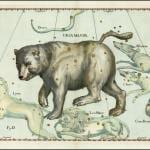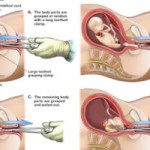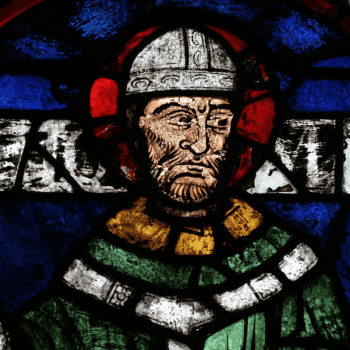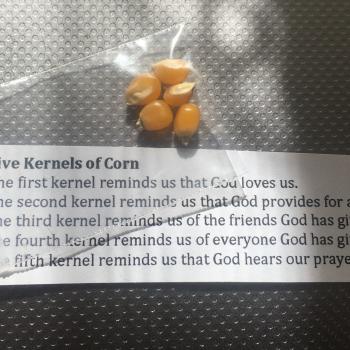Leo,(July 22-August 23) the last sign in the Christian Zodiac, fulfills all of what the previous 11 signs have pointed to: Jesus, the Lion of Judah and victor over Satan: “the Lion of the tribe of Judah, the Root of David, has triumphed.” (Rev. 5:5)
In the heavenly depiction, Leo’s tale touches Virgo’s head, the first sign in “God’s Zodiac.” The lion stands over Hydra, the long snake representing the devil, which is the largest separate constellation in the sky. Hydra stretches across the sky by more than 100 degrees– below the constellations of Cancer, Leo and Virgo.
When understanding the mythology of the ancients, we learn that the original understanding of the message in the sky points to the:
1) Person, work and triumph of Jesus Christ (Virgo: Seed of the Woman, Jesus Incarnate, Libra: Redeemer, Scorpio: Sufferer, Saggitarius: Conquerer);
2) Fruit of his work and mediation, the body of people spiritually born to him through faith (Capricorn: Sacrifice, Aquarius: The Pouring Out of the Holy Spirit & Living Water, Pisces: Fishers of Men and the Persecuted Church, Aries: Glorious Lamb);
3) Final consummation of the Redeemer who is reunited with his redeemed (Taurus: Judge, Gemini: Whose binary star points to Jesus of Nazareth, Cancer: Journey from Dark to Light and Leo: Victor).
In Primeval Astronomy, “The Gospel in the Stars,” theologian and Lutheran minister Josephe Agustus Seiss explains:
“Evil is always perverted good, as dirt is simply matter out of place. It is the spoilation of some better thing going before it. And so there is reason to think that there is, after all, some great original, divine science connected with the stars, which astrology has prostituted to its own base ends, and which is our duty to search out and turn to its proper evangelical use.”
When we understand the Egyptian Sphinx in its proper context we learn its head is in the shape of a woman (Virgo) and its body is formed in the shape of a lion (Leo), bringing the entire zodiac story full circle. The stars tell a story that begins and ends with Jesus.
Leo was a well-known astrological sign long before the Greeks ever transformed its story into the exploits of Hercules and Hydra.
There are three key stars in Leo’s body. The first is Regelus, a first-magnitude star located on the right side of the lion’s chest close to the base of its front right leg. It means “the feet that crush.” The next brightest star located at the base of its tail is Denebola, which means, “the judge.” On its back, located near its right shoulder is Al Giebha, which means “the exalted.”
Leo also has three Decans, completing the 36 Decans of constellations in the 12 signs of the Zodiac. They are Hydra, the Crater, the Cup of Wrath, and Corvus.
In the Denderan Zodiac, the Lion stands directly on top of Hydra, whose name means “the abhorred.” Its hieroglyphic name, Knem, means, “vanquished, conquered.”
“The great mission of the promised Seed of the woman was effectually to bruise the Serpent’s head,” Seiss argues.
According to Greek Mythology, Hydra had 100 heads. When one head was cut off, two grew back unless that part of its neck was burned with fire. One of Hercules’ greatest obstacles was to destroy Hydra.
Leo is the final depiction of Jesus crushing the serpent’s head. In Scorpio, the Greek Ophiushus holds his foot over the head of Scorpio. In Taurus, Orion, the great hunter also has his foot over Lepus.
We learn from many biblical texts about the serpent. He “was the subtle and snaky creature which deceived and seduced our first parents into transgression,” Seiss adds, pointing to Revelation 12:9, known as “the great Dragon, that ancient serpent, called the devil and Satan, the deceiver of the whole world.”
The devil “has managed to worm himself into everything that goes to make up human life, corrupting and perverting it to his own base ends, seating himself in all the centers of influence and power, and making himself the very king and god of this world,” Seiss explains, pointing to Ephesians 6:12: “For we do not wrestle against flesh and blood, but against the rulers, against the authorities, against the cosmic powers over this present darkness, against the spiritual forces of evil in the heavenly places.”
Although Hydra is the largest separate constellation in the sky, it can be found by drawing a line through the two bright stars in Gemini (Castor and Pollux). Near the end of Hydra’s tail are Leo’s other two Decans: Crater– the Cup of Wrath, which looks like a jug, and Corvus, the raven.
Seiss points to Psalms to explain the symbolism of Crater: “For in the hand of the Lord there is a cup with foaming wine, well mixed, and he pours out from it, and all the wicked of the earth shall drain it down to the dregs” (75:8); “Let him rain coals on the wicked; fire and sulfur and a scorching wind shall be the portion of their cup” (11:6).
He also points to Revelation to explain the cup from which the wicked will drink: “If anyone worships the beast and its image and receives a mark on his forehead or on his hand, the also will drink the wine of God’s wrath, poured full strength into the cup of his anger, and he will be tormented with fire and sulfur in the presence of the holy angels and in the presence of the Lamb.” (Rev. 14:10-11)
Seiss adds:
“Here in the second Decan of Leo we have the very picture of that Cup, broad, deep, full to the brim, an displaced directly on the body of this writhing Serpent! Nay, the same is sunk into his very substance, for the same stars which mark the bottom of the Cup are part of the body of the accursed monster, so that the curse is fastened down on him and in him as an element of all his after being. Dreadful beyond all thought is the picture John gives of this Cup of unmingled and eternal wrath, but not a whit more dreadful than the picture of it which the primeval prophets have thus inscribed upon the stars.”
Seiss’ exposition on Corvus, the third Decan, ties together the story of David (“the first great impersonation of Judah’s Lion”) who curses Goliath in the name of the God of Israel. He says he will give “the carcasses of the host of the Philistines to the birds of the air…” (1 Sam. 17:46) He also points to Jesus’ return:
“So when the Lord of Lords and King of Kings dashes forth on the white horse, with the armies of heaven following him on white horses to tread the winepress of the fierceness and wrath of the Almighty God, an angel stands in the sun, calling with a great voice to all the fowls and birds of prey to come and feast themselves on the flesh of the enemy (Rev. 19:17,18). Here in the third Decan of Leo, we have the pictorial sign of the same thing. Here is Corvus, the Raven, the bird of punishment and final destruction, grasping the body of Hydra with its feet and tearing him with his beak.
“The myths have but little sensible or consistent to say of this raven, except in making it the symbol of punished treachery. The Greeks and Romans had for the most part lost its meaning. The Egyptians called it Her-na, the enemy broken.”
But to Christians, understanding God’s message in this depiction, is to know the serpent will be utterly destroyed just as it is prophesied in Scripture. Birds will come to tear the flesh of Jesus’s enemies after he strikes them down.
The Lion of Judah will vanquish the Serpent once and for all. The Serpent’s doom is sealed, completing the circle of time for eternity.
The eternal death of the Serpent will be met with cherubims crying, “Holy, holy, holy, is the Lord God of hosts; the whole earth is full of His glory!”












